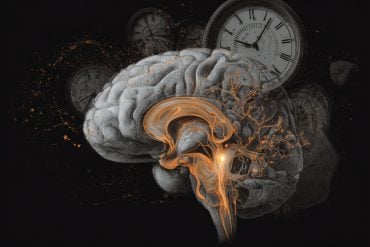Summary: Researchers discovered a way to reactivate dormant cells in the retina of mice to restore vision, without the need for transplantation.
The team discovered dormant glial cells can be transformed into cells sharing properties with cone photoreceptors, which enable color perception, reading and driving.
The approach, which uses two genes to transform Müller cells into retinal neurons, could offer new hope for developing regenerative therapies to replace lost cells in retinal degeneration.
Key Facts:
- Researchers at the Université de Montréal have discovered a new way to potentially restore vision in patients suffering from degenerative retinal disease.
- The research team found that dormant glial cells in the retina can be induced to transform into cells sharing some properties with cone photoreceptors, which enable color perception, reading and driving.
- The approach uses two genes to transform Müller cells into retinal neurons, offering new hope for developing regenerative therapies that could replace lost cells in retinal degeneration.
Source: University of Montreal
Published this week in Proceedings of the National Academy of Sciences, the research was led by UdeM medical professor Michel Cayouette, director of cellular neurobiology research at the UdeM-affiliated Montreal Clinical Research Institute.
His research team discovered that cells that lie dormant in the retina (glial cells) can be induced to transform into cells sharing some properties with cone photoreceptors, which allow people to do things like perceive colors, read and drive.
Inherited retinal degenerations are caused by the loss of light-sensitive cells in the retina at the back of the eye. When these cells degenerate due to disease, they are not replaced and the patient suffers vision loss that can progress to total blindness.
Although various approaches such as gene therapy exist that offer hope of slowing or blocking the progression of photoreceptor cell loss, these techniques cannot restore lost cells and are therefore not useful for patients at the advanced stages of the disease.
Hence the urgent need to develop regenerative therapies that could replace the lost cells and restore vision. One promising avenue would be to use stem cells to generate photoreceptors that could be transplanted into a patient’s eye, but this technology now faces major challenges that are slowing its being used in clinical practice.
In an approach that circumvents the need for transplantation, Cayouette’s team found a way to reactivate dormant cells in the retina and transform them into neural-like cells that could ultimately be used to replace cells lost in retinal degeneration.

“We have identified two genes that, when expressed in these dormant cells called Müller cells, can convert them into retinal neurons,” said the study’s first author Camille Boudreau-Pinsonneault, who recently earned her Ph.D. at UdeM for this breakthrough.
“What’s interesting is that these Müller cells are known to reactivate and regenerate retina in fish,” she said. “But in mammals, including humans, they don’t normally do so, not after injury or disease. And we don’t yet fully understand why.”
Co-author Ajay David, a doctoral student in Cayouette’s lab, lauded “this exciting advance over cell transplantation,” saying “we may one day be able to take advantage of the cells that are normally present in the retina and stimulate them to regenerate retinal cells lost to pathological conditions and to restore vision.”
Building on their success, the scientists now plan to perfect the effectiveness of this technique and find a way to promote full maturation of cells into cone photoreceptors that could restore vision.
See our web story here.
About this visual neuroscience research news
Author: Press Office
Source: University of Montreal
Contact: Press Office – University of Montreal
Image: The image is credited to Neuroscience News
Original Research: Open access.
“Direct neuronal reprogramming by temporal identity factors” by Camille Boudreau-Pinsonneault et al. PNAS
Abstract
Direct neuronal reprogramming by temporal identity factors
Temporal identity factors are sufficient to reprogram developmental competence of neural progenitors and shift cell fate output, but whether they can also reprogram the identity of terminally differentiated cells is unknown.
To address this question, we designed a conditional gene expression system that allows rapid screening of potential reprogramming factors in mouse retinal glial cells combined with genetic lineage tracing.
Using this assay, we found that coexpression of the early temporal identity transcription factors Ikzf1 and Ikzf4 is sufficient to directly convert Müller glial (MG) cells into cells that translocate to the outer nuclear layer (ONL), where photoreceptor cells normally reside. We name these “induced ONL (iONL)” cells.
Using genetic lineage tracing, histological, immunohistochemical, and single-cell transcriptome and multiome analyses, we show that expression of Ikzf1/4 in MG in vivo, without retinal injury, mostly generates iONL cells that share molecular characteristics with bipolar cells, although a fraction of them stain for Rxrg, a cone photoreceptor marker.
Furthermore, we show that coexpression of Ikzf1 and Ikzf4 can reprogram mouse embryonic fibroblasts to induced neurons in culture by rapidly remodeling chromatin and activating a neuronal gene expression program.
This work uncovers general neuronal reprogramming properties for temporal identity factors in terminally differentiated cells.







